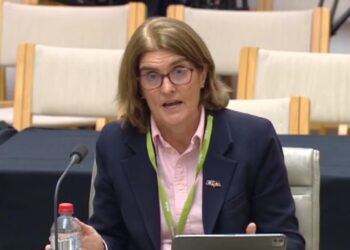The Reserve Bank (RBA) prioritised certainty at its last meeting, opting for a 25 basis point reduction to align with market expectations and ensure that “monetary policy settings remained predictable at a time of heightened uncertainty”.
According to its latest minutes, the central bank considered both holding and a jumbo 50 basis point cut but ultimately opted for a 25 basis point reduction to remain “well placed” to respond as the economy evolves.
Concerns that global policy uncertainty could pose greater risks to the world economy than previously assumed, along with signs of a weaker-than-expected domestic outlook, led the board to consider a 50 basis point cut to safeguard against potential downside scenarios.
However, members ultimately decided that the case to lower the cash rate target by 25 basis points at its May meeting was “the stronger one”.
“Developments in the domestic economy on their own justified a reduction in the cash rate target,” the minutes read. “The case for that action was strengthened by developments in global trade policy.”
Elaborating on its decision, the RBA said it was driven by three factors: progress on returning inflation to target, a shift in global risks to the downside, and a view that prevailing uncertainty warranted a path of least regret.
Members, it said, judged that it was not yet time to move monetary policy to an expansionary stance, taking account of the range of estimates involved, given that inflation was yet to return sustainably to the midpoint of the target range and the staff’s assessment that the labour market was still tight.
“These considerations and the prevailing global policy uncertainty led members to express a preference to move cautiously and predictably when withdrawing some of the current policy restriction,” the RBA said.
Reflecting on the global economy, the central bank acknowledged that the rise in global tariffs and increase in policy uncertainty had adversely changed the outlook for growth in Australia’s major trading partners.
It, however, added that it still remains “difficult” to quantify the impact of this on Australian activity given that international trade policy is “still in flux”.
To date, the central bank said there is an “absence of signs” in the Australian data that global trade policy uncertainty was having a significant negative impact on the economy, and that some plausible adverse scenarios could see upward pressure on inflation.
As at 2 June, markets were pricing a further 25 basis point rate cut in May with 78 per cent certainty.
Following last month’s meeting, RBA governor Michele Bullock described the decision as “a confident cut” and “the right decision at this point in time”, while cautioning that the path ahead remained uncertain.
Speaking at the post-meeting press conference, she said domestic conditions had aligned in favour of a cut – albeit the labour market remains tight and productivity growth has not improved – noting the board’s decision “does not preclude further action in the future”.
This was reiterated in the bank’s minutes alongside the message that future rate decision will be guided by incoming data and the evolving assessment of risk.
Moreover, the bank assured that policy is “well placed” to respond decisively to international developments if they were to have material implications for activity and inflation.







